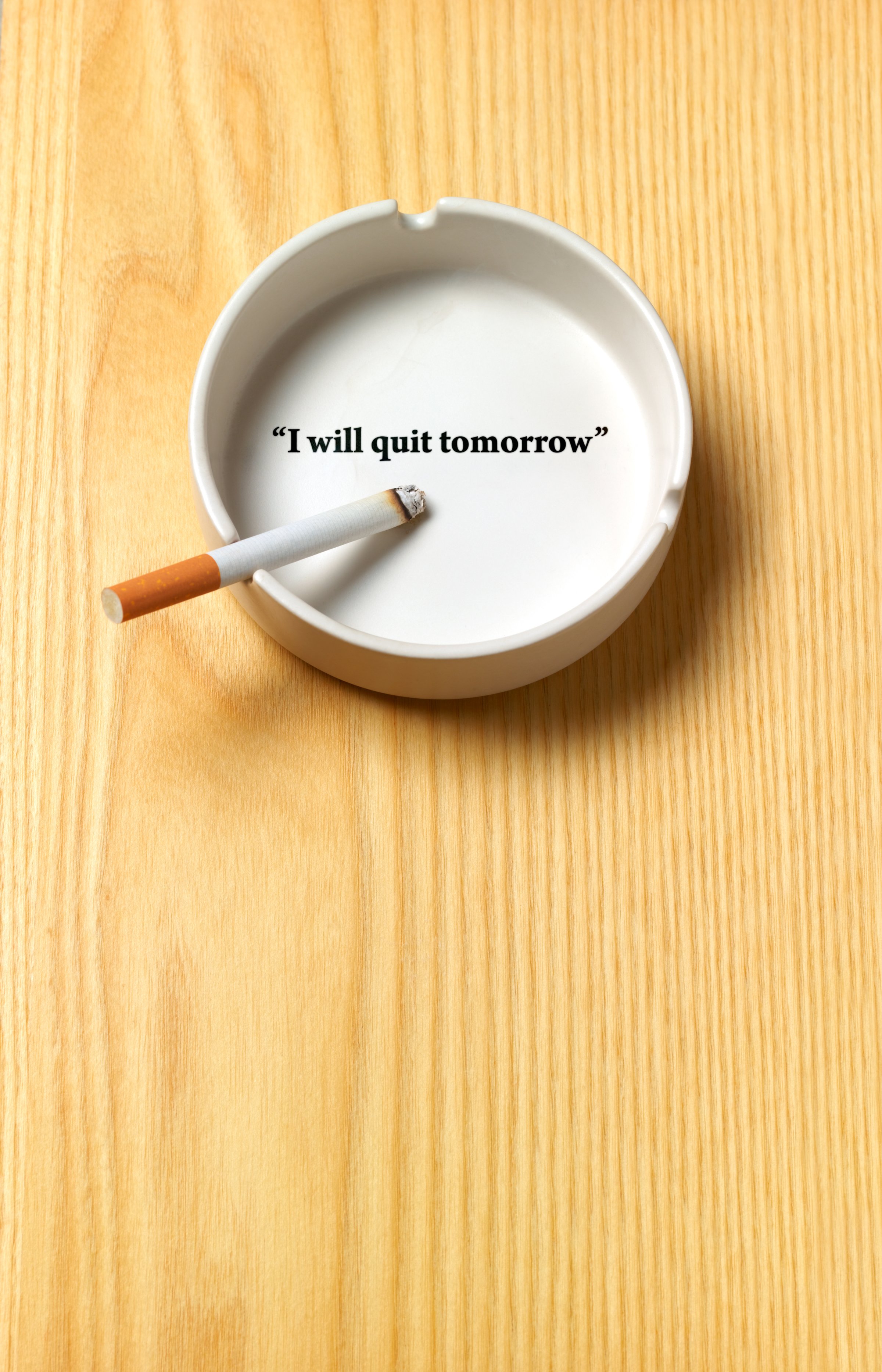
Ironically, studies show saying “I’ll never do that again” makes you even more likely to do that again.
About 40% of the actions we perform in a day are habits. So we’re on autopilot almost half the time.
Let’s round up the research on bad habits and good habits and learn the best way to turn one into the other.
Awareness
The first step is awareness. That cigarette doesn’t magically appear in your mouth. Noticing yourself acting habitually is a big first step. We have to get off autopilot to make changes.
It might be too hard to cut back on your habits at first. That’s okay. Try reducing the variability in the habit. In other words, don’t even try to quit smoking; try to smoke the same number of cigarettes each day. This little effort toward self-control led to a decrease in smoking over time.
Find Your Triggers
Now that you’re noticing when you do your habits, focus on what triggers them. Stress? Friends? Identifying your triggers is key.
Replace
Getting rid of habits is hard. Assigning new habits to established triggers is far easier. What are you going to do now when that trigger arises? Establish something new to take the place of the old habit.
“If-then” scenarios are one of the most powerful tools for resisting triggers. Establish a plan: “If I’m tempted to ______ then I will _______ instead.” Rather than scrambling to resist with willpower, research shows people perform dramatically better when they already have an established “if-then” process ready. More on “If-then” here.
Use baby steps, focus on consistency above all else and reward yourself for “small wins“. Savoring these little achievements day by day is one of the reasons behind the effectiveness of Alcoholics Anonymous.
Manipulate Your Context
Don’t rely on willpower. The importance of self-control is one of the biggest myths about habit change. Instead, manipulate your environment so you don’t have to exert self-control. Throw out the donuts. Hide the booze. This has been shown to be surprisingly powerful.
Manipulate your environment so as to make what you should do easy and what you shouldn’t do hard.
If you can make good habits take 20 seconds less time to perform and bad habits 20 seconds longer, you’ll likely see big changes in your behavior. Reminders to do the right thing (like signs or even text messages) can be a big help.
And context isn’t just the inanimate objects. Friends are one of our biggest influences and can be a potent tool for habit change.
More on the power of context here.
Don’t Give Up
Changing habits takes an average of 66 days (establishing competency at new skills takes approximately 8 weeks as well) so hang in there and don’t get discouraged. More tips are here.
The research says these are some good daily habits and these are solid weekly habits.
Best books on the subject are The Power of Habit and Willpower. I highly recommend them both.
This piece originally appeared on Barking Up the Wrong Tree.
Join 25K+ readers. Get a free weekly update via email here.
More Must-Reads from TIME
- Why Biden Dropped Out
- Ukraine’s Plan to Survive Trump
- The Rise of a New Kind of Parenting Guru
- The Chaos and Commotion of the RNC in Photos
- Why We All Have a Stake in Twisters’ Success
- 8 Eating Habits That Actually Improve Your Sleep
- Welcome to the Noah Lyles Olympics
- Get Our Paris Olympics Newsletter in Your Inbox
Contact us at letters@time.com